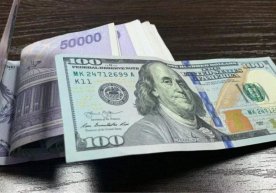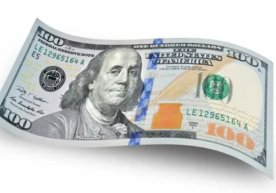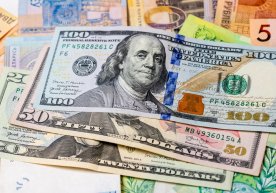
According to the latest report from the State Statistics Committee, in the first nine months of 2023, the share of the unobserved economy in Uzbekistan's gross domestic product reached 33.3 percent. This figure amounted to 433.67 trillion soums (approximately USD 36.17 billion).
This is an increase from the 32.9 percent share in the first half of the year, occurring against the backdrop of overall economic growth. According to preliminary data, in January–September, the country's gross domestic product exceeded 1.3 quadrillion soums (approximately USD 108.73 billion) for the first time, registering a real growth of 7.6 percent.
This is the highest rate of growth since 2021, marking the period of recovery following the COVID-19 pandemic. The composition of the unobserved economy—that is, the informal and shadow activities—underwent some changes.
The main share falls to the informal sector, with this figure making up 333.82 trillion soums, or 25.6 percent of GDP. The shadow economy amounted to 99.85 trillion soums, representing 7.7 percent of GDP.
For comparison, while the share of the informal sector increased in the first half of the year, the share of the shadow economy declined slightly. By sector, analysis shows that the highest level of unobserved economic activity was recorded in agriculture, forestry, and fisheries, accounting for 69.4 percent of gross value added.
The next largest are the services sector, with a 36.2 percent share, and construction, with a 35 percent share. In industry, this share is at its lowest—10.2 percent.
According to the results of 2024, the scale of the unobserved economy exceeded 505 trillion soums (about USD 40 billion), which was equal to 34.8 percent of GDP. At that time, the informal economy accounted for 26.4 percent of GDP, and the shadow economy made up 8.4 percent.
In September 2023, the shadow economy was estimated at USD 32 billion, accounting for about 40 percent of GDP. In this estimate, secondary housing and car markets, informal trade, and the service sector were identified as the main factors.
The government is taking systematic measures to reduce this sector. For example, in July 2024, the Prosecutor General's Office launched a special Telegram bot to collect information from citizens about violations of the law and to accept suggestions for resolving current problems.
The efforts of law enforcement and supervisory bodies have produced results: at the end of 2024, the Prosecutor General's Office ensured the recovery of 16 trillion soums—previously “hidden”—to the state budget. In addition, more than 15,000 jobs and 9,000 business entities were legalized, and damages of 2 trillion soums were compensated within criminal cases.
The government has set ambitious goals for the future. In December 2024, Mubin Mirzayev, Deputy Chairman of the State Tax Committee, announced plans to halve the size of the shadow economy by 2030.
It is expected that, as early as 2025, measures to “legalize” the economy will add an additional 20 trillion soums to the state budget.
Users of Меҳмон are not allowed to comment this publication.













